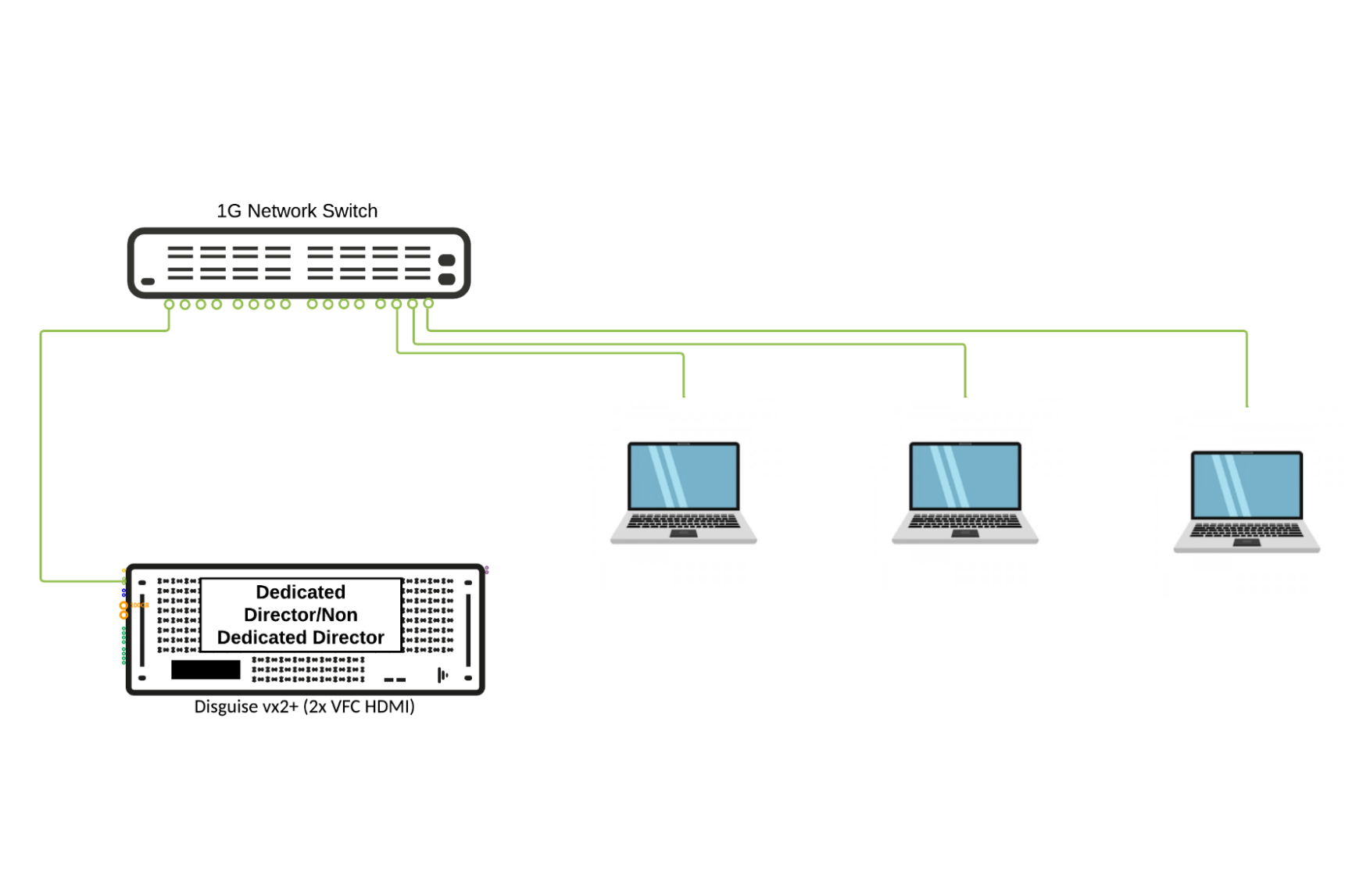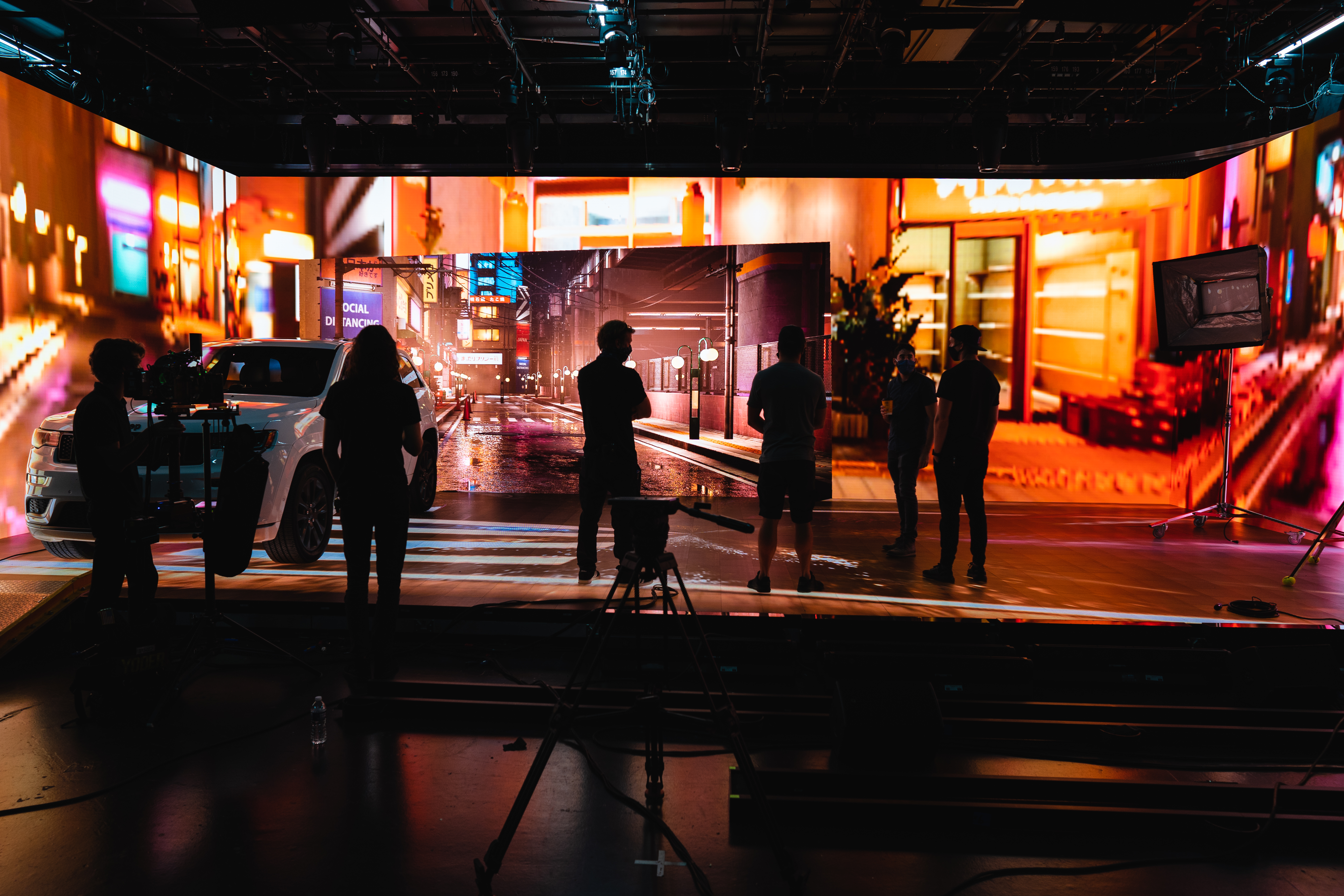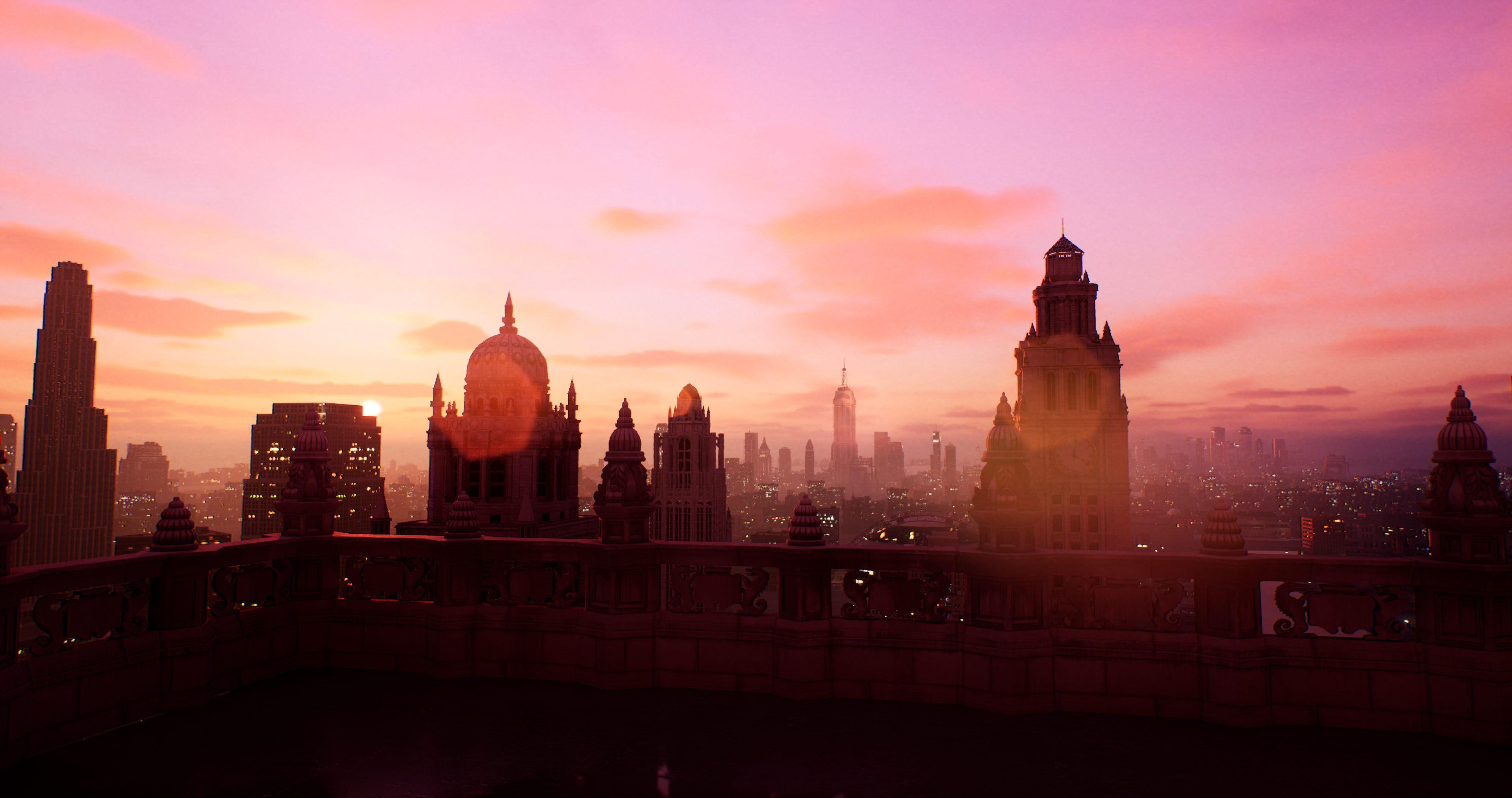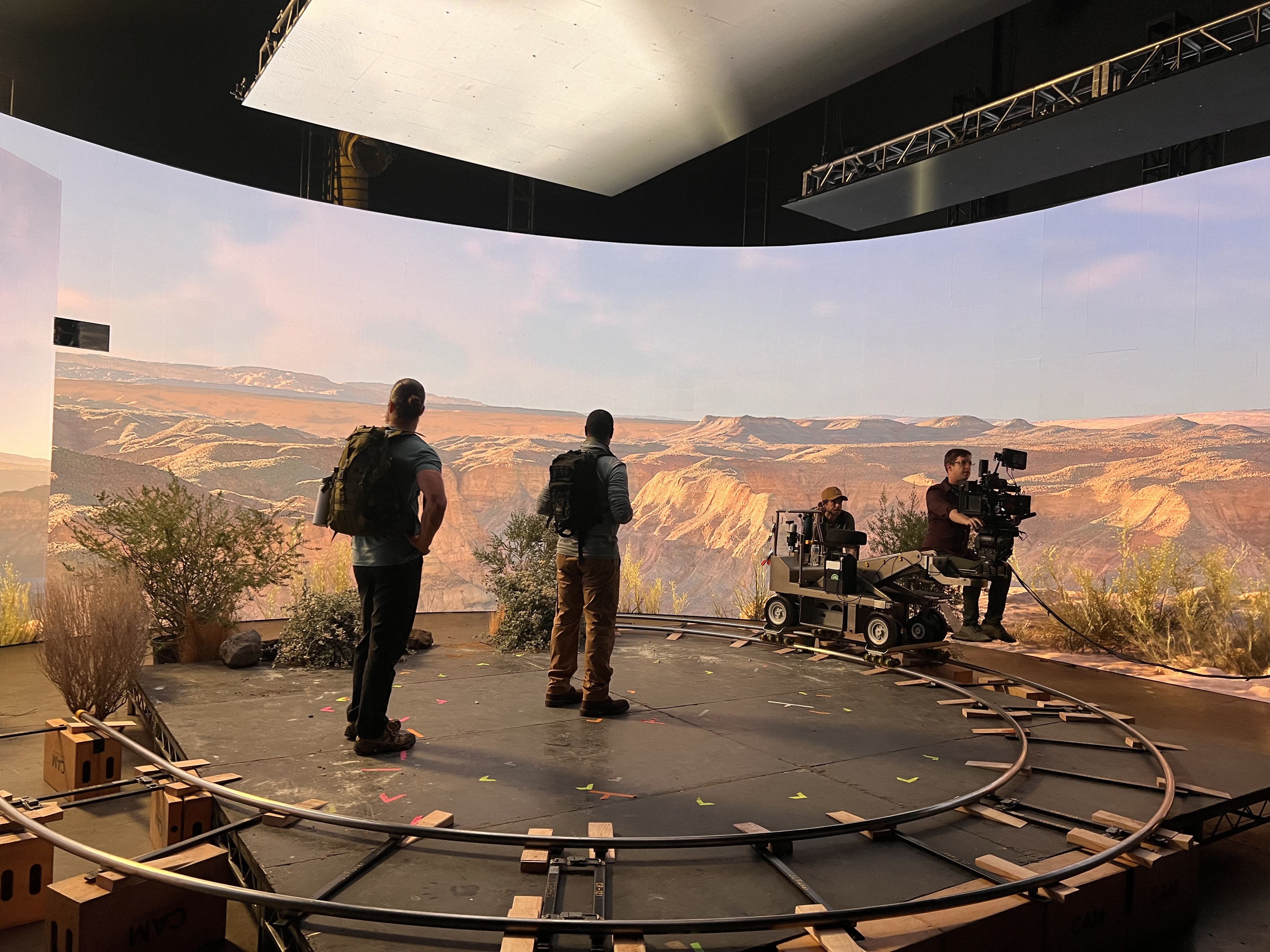Put AR at the front of your studio to give your audience more depth and make your data visualization pop. Watch live vote tallies come to life with 3D bar graphs rising and falling with each new vote count, or district maps lighting up as winners are announced. Add in AR winner boards that pop up as candidates win critical states or districts.
For the ultimate effect, AR can teleport candidates, analysts, or correspondents into the studio LED, making them appear live without ever being there. AR lets you virtually bring in key players from anywhere in the world, creating the illusion that they’re right there interacting with the hosts. Whether you’re showcasing a candidate for a live interview or having an analyst break down the latest election results, this approach adds a futuristic, engaging touch to your election coverage.
4. Remote Live Production Integration
If you’re not ready to teleport your correspondents into the studio, seamlessly integrating live footage from their location into the virtual environment is just as effective.
Using picture-in-picture (PiP) windows, you can bring live video feeds of your remote reporters and guests directly into your broadcast, placing them directly within your virtual LED studio. Using LED makes it possible for your presenter to have a more natural, face-to-face conversation with your remote guests. Whether it’s an on-the-ground report from a key election site or real-time analysis from experts across the country, this integration allows for smooth transitions and cohesive visuals. Disguise’s system can simultaneously bring any number of live feeds to your LED wall. This is a major win during election season when you need real-time, coordinated inputs from multiple sources to keep the coverage flowing.
5. Cloud-Based Workflows for Scalability
Cloud-based workflows supercharge virtual production by offering scalability, remote access, and efficient live content management, making them an essential part of today’s broadcast toolkit.




